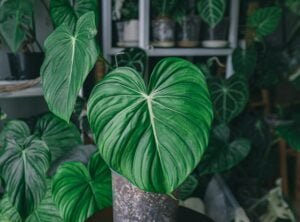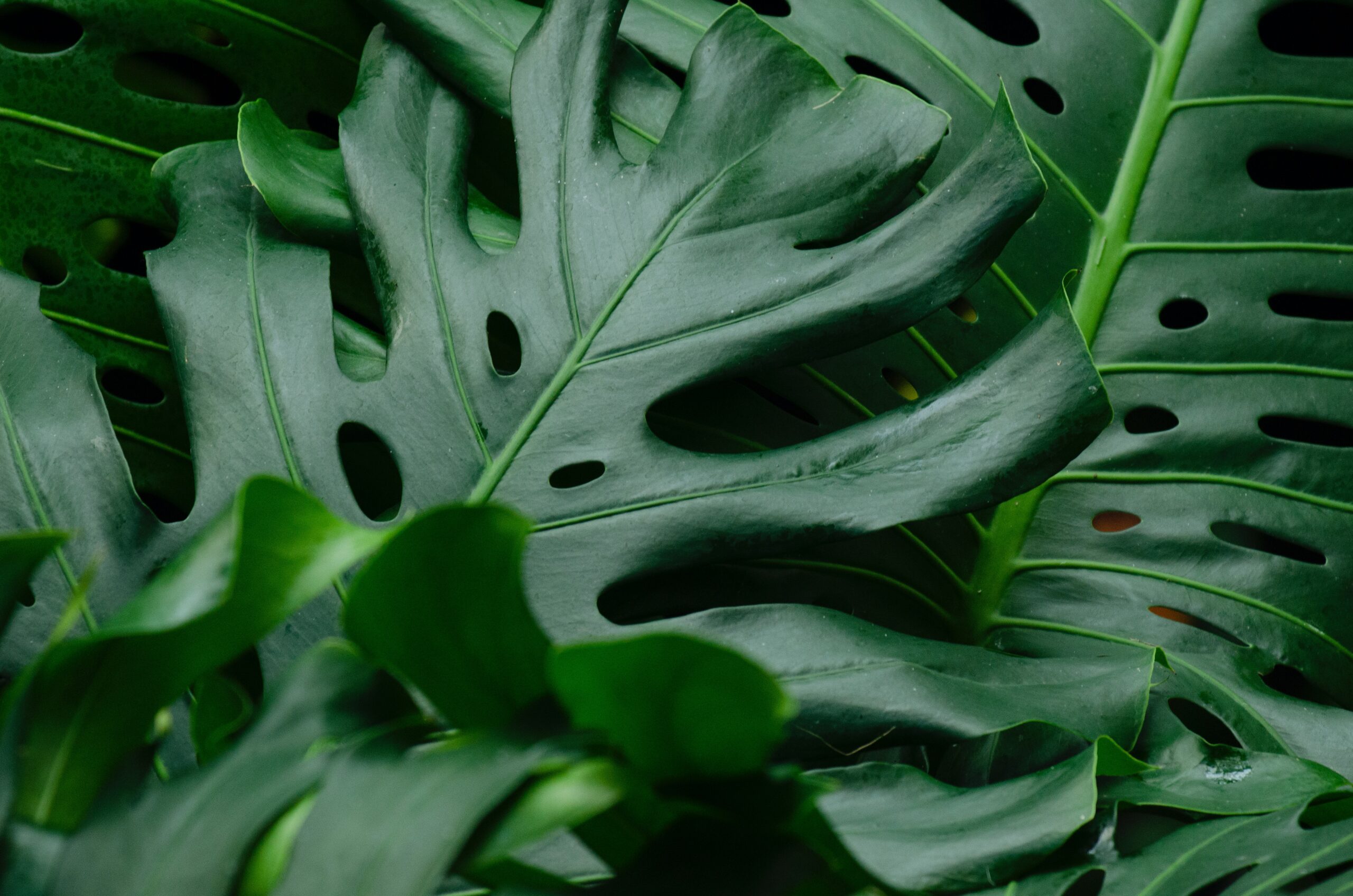Philodendron Goeldii
Philodendron Goeldii, popularly known as Finger Leaf, is a member of the Thaumatophyllum Spruceanum family and is native to South Africa. The star-shaped leaves of the Philodendron Goeldii provide a tropical feel to the home’s interior.
As long as it gets indirect sunshine, Philodendron Goeldii is OK with me. Sphagnum moss or peat-based soils are ideal growing environments. This plant demands a greater humidity level than others (higher than 60 percent ). Cold weather isn’t ideal since it prefers temperatures between 50 and 86 degrees Fahrenheit (10 and 30 degrees Celsius).

Philodendron Goeldii is a French plant since it is indigenous to French Guiana. A new hybrid Philodendron Goeldii Hawaiian Finger Leaf is available. This plant has a similar growth pattern to Philodendron Selloum, and its foliage resembles that of Schefflera in appearance.
They may be planted inside and outdoors in USDA hardiness zones 9-10 since they grow unrestrained. Vines that rely on other plants to help them grow upwards form when Philodendron Goeldii becomes older.
Your Philodendron Goeldin’s health will improve with a few simple measures, and this guide will help you get to know your plant better.
What you need to know about Philodendron Goeldii
Soil
Philodendron Goeldii likes a damp but well-drained soil environment. The soil must include organic materials, such as peat moss. Decaying organic debris and insect carcasses are combined to create the sphagnum peat moss, which possesses remarkable water-holding and pH-maintaining properties.
A pH of 5-8 is ideal for their healthy development. The soil must be somewhat acidic or slightly alkaline since the sphagnum is similarly acidic. Otherwise, an accident would harm the plant.
Watering
Ideally, it would help if you watered your plants twice a week, giving the soil a chance to dry up and absorb the water between applications. In the growth stage, the soil must be supplied with water until it is soaked, and you can feel the moisture on the surface since Philodendron Goeldii enjoys wet soil.
Overwatering Philodendron Goeldii, like overwatering other plants, may harm the plant. Root rot may occur as a result of over-irrigation. When it’s cold outside, use less water.
Light
As long as the light isn’t too bright, Philodendron Goeldii enjoys soaking up indirect sunshine. To avoid drying out your Philodendron Goeldii, you should be careful not to expose it to direct sunlight. Near a north-facing window or a door with little light is ideal for the Philodendron Goeldii to obtain its essential light.
Make careful to bring the Philodendron Goeldii inside during the winter months, but make sure it gets enough sunshine.
Temperature
Temperatures below 59 degrees Fahrenheit are ideal for the growth of Philodendron Goeldii (15 degrees Celsius). Temperatures in the morning vary from 50 to 86 degrees Fahrenheit, depending on the time of day (10 degrees Celsius to 30 degrees Celsius). 53.6 to 82.4 degrees Fahrenheit are typical nighttime temperatures (12 degrees Celsius to 18 degrees Celsius).
It’s also important to watch Philodendron Goeldii since low temperatures may lead to wilting or leaf loss. For those Philodendron Goeldiis that live outside or are in a garden, this also holds true.
Humidity
It’s important to remember that Philodendron Goeldii like wet soil, so make sure the humidity level in your home is at least 70% while caring for this plant. At any time of day or night, a percentage of 60-80% is fine. Use a humidifier or a tray loaded with water to make sure this happens.
Fertilizer
The best way to ensure their luscious green leaves develop to their full potential is to apply medium-balanced fertilizers with a nitrogen, phosphorus, and potassium ratio of 10:10:10.
The organic matter in manure makes it an excellent supplement if your plant needs more nutrients. Fertilizer should be used once a month, particularly in the spring and summer months. Philodendron Goeldii should not get fertilizer throughout the cold months.
Repotting
The sooner you notice a problem, the better since Philodendron Goeldii is notoriously difficult to relocate. Philodendron Goeldii’s roots will only be useful after they’ve escaped the pot’s confines. This particular Philodendron is a big fan of root-bounding.
More than two and a half inches bigger than the preceding pot, it’s recommended. Determine how much room your plant needs in the new pot. Drainage is an important consideration, too.
Pruning
There’s no need to prune Philodendron Goeldii since it doesn’t take up any space. On the other hand, Pruning should be done with care, so don’t go overboard. This would make the plant more dense and vibrant.
Remove just the yellow or diseased leaves. Check the leaves for signs of health, and only leave healthy ones after you’ve pruned the sick ones. Philodendron Goeldii may be pruned at any time of year.
Propagation
Philodendron Goeldii may be propagated rapidly by layering and cutting procedures, among other methods.
Stem cuttings
- When propagating, cut a 2-3-inch section of the stem, and choose a node slightly below another leaf for the new seedling to grow from.
- It’s important to remove all but a few of the little leaves on it.
- Take care to ensure that the cutting is well buried in the potting soil but that the leaves do not contact the soil.
- Place the mixture near a window or door in dappled sunlight.
- It will be time to transplant Philodendron Goeldii when the roots begin to exhibit some resistance when you attempt to lift them out of the ground.
- The juvenile Philodendron Goeldii should be moved to a larger pot so that it may thrive.
Layering
Layering is another option for propagating your Philodendron Goeldii. There are several methods of layering that may be employed. I’m going to go through a few common methods.
Tip Layering
- The slouching stem of the Philodendron Goeldii must be able to reach the ground before this procedure may be performed.
- Bury the shoot’s tip, which should be around 3 inches long.
- You may attempt to secure it in the dirt if it doesn’t fit.
- Instead of being roughly 4 inches deep, the stem must be promptly buried.
Compound Layering
- This isn’t a difficult technique to learn as basic layering is used.
- Many branches are buried in the soil and used for this purpose.
- Do so by making sure the stem is sandwiched between two buds.
Stool Layering
- Take the plant down to about an inch above the earth during the dormant season.
- Growing up from the roots would be a lot of fun!
- Cover the newly emerging shoots with soil.
- Time would take care of the roots of the new sprouts.
- Then, remove the shoots from the main plant and transplant them into a new container.
French Layering
- When a plant is dormant, it is possible to cut its stem up to 3 inches above the earth.
- Then, in the fall of the next year, separate the finest shoots from the rest.
- A pair of U-shaped pins is all that is needed to secure these shoots into place.
- The buds and stems would then sprout shoots the following spring.
- The goal is to remove everything except the top 3 inches of the shoots to reach a manageable length.
- During the spring, this procedure is continued until the piled-up dirt measures six inches in depth or more in-depth.
- To check for horizontal stems in the fall, remove all soil.
- Plant the stems in individual pots after cutting or separating them.
Air-Layering
- Use this technique in the spring or summer.
- The first step is to remove all the extra leaves from the stem and cut the bark off the stem.
- Next, it would be best to cover the wound with an organic combination. Be careful to enclose the bark in a plastic bag completely and then tie the bag shut.
- Remove the plastic once the roots can be seen through it, but leave the organic stem in place.
- The last step is to remove the covered stem and place it in a new container.
To reproduce Philodendron Goeldii, you may use seeds; however, this is seldom done since the seeds are difficult to get. Make careful to remove the seeds from the interior of the fruits after they are completely matured if you wish to use this approach. Plant them in the ground. At any time of the year, it can be done.
Blooms
While each variety of Philodendron Goeldii has a distinct flowering period, they tend to bloom throughout the year. There are just two to three blooms on Philodendron Goeldii, and they are only noticeable for a short period.
Growth
Philodendron Goeldii may grow to a height of 8 inches (20 cm) and a width of 4 inches (10 cm), respectively (10 cm). You might expect to see spiraling, lush green leaves with proper care and nutrition.
When it comes to frigid winters and direct sunshine, Philodendron Goeldii can’t stand it. In the summer, the leaves would be burned by the sun, and in the winter, they would wilt due to decreasing temperatures.
Tips for Getting Started with Gardening
- Philodendron Goeldii thrives in shady areas and enjoys a high humidity level.
- Philodendron Goeldii requires moist soil to develop to its full potential.
- Philodendron Goeldii needs the correct quantity of fertilizer to flourish.
- Philodendron Goeldii needs frequent and thorough watering to thrive and flourish.
Conclusion
One of my favorite plants is the Philodendron Goeldii, which is simple to cultivate and maintain. Because it grows a trunk and drops its lower leaves over time, this species, also known as Tree Philodendron, is very uncommon. The leaves would continue to grow higher to make your area more visually appealing.
The spiraling growth pattern of the enormous leaves would give them a distinctive look. Everyone will be delighted by the fresh tropical appearance of this plant, which will satisfy your desire for an interior jungle.

[…] Philodendron Goeldii Plant Care and Maintenance […]